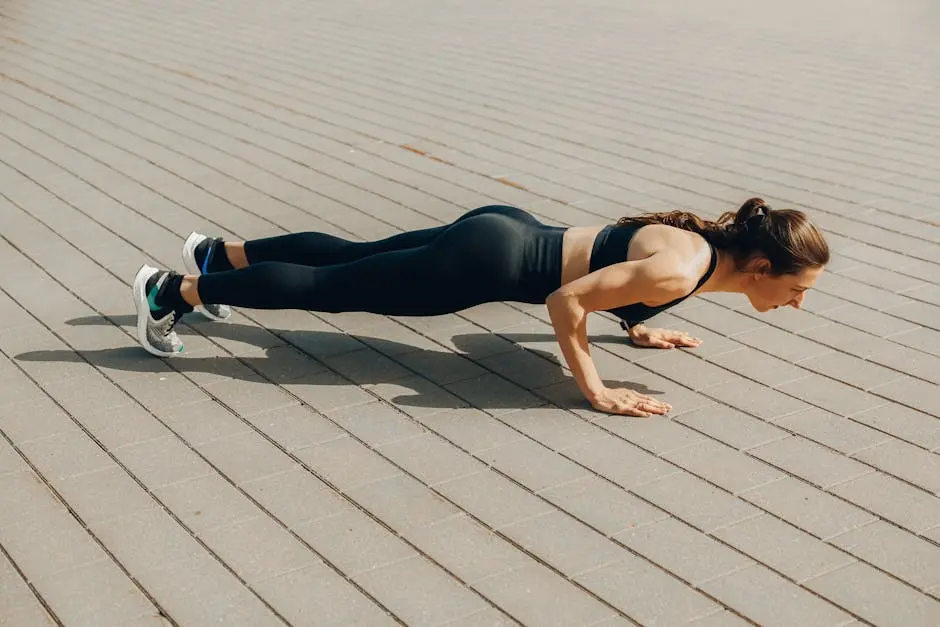Joint health is essential for maintaining mobility and a high quality of life as we age. Whether you’re an athlete, a weekend warrior, or someone who simply wishes to stay active, incorporating the right exercises into your routine can make all the difference. Here are some expert-recommended exercises to help keep your joints healthy and strong.
1. Gentle Yoga Stretches
Yoga involves slow, deliberate movements that can help improve flexibility and joint health. Regular practice can enhance mobility and help alleviate joint stiffness. A pose such as child’s pose, for example, allows for a gentle stretch through the spine and hips. Incorporating yoga into your routine offers not only physical benefits but also mental relaxation, crucial for reducing stress that can contribute to joint tension.
For those new to yoga, there are many introductory classes available that focus on the basics of flexibility and breathing. It’s a good idea to consider these foundational principles, especially if joint health is a concern. As you progress, more advanced poses can be safely added to further challenge your flexibility and strength. Remember that yoga does not require a high degree of flexibility to begin, as it is primarily about working at your own pace and capacity.
2. Swimming for Low-Impact Cardio
Swimming offers a full-body workout while minimizing stress on the joints. The buoyancy of water supports your body, allowing you to keep moving without pain. This makes it an ideal exercise for people of all ages and abilities. Whether you’re doing laps in freestyle, practicing the backstroke, or even engaging in aquafitness classes, the water environment mitigates impact, thus protecting vulnerable joints.
In addition to its joint-friendly nature, swimming helps improve cardiovascular health and endurance. By maintaining a regular swimming schedule, you can enhance muscle tone and coordination, which indirectly supports joint stability. For those dealing with joint pain or recovery from injury, swim exercises like water jogging or aquatherapy can be especially beneficial. These workouts maintain fitness without the risk of exacerbating joint injuries.
3. Pilates for Core Stability
Pilates emphasizes core strength, which in turn supports the joints in your hips and spine. It also enhances flexibility and balance, key components of joint health. Core exercises in Pilates are particularly beneficial because a strong core is a foundation for good posture and balance, reducing unnecessary stress on the joints. Pilates exercises such as the ‘Hundred’ or ‘Roll-Up’ improve the alignment and mechanics of the body.
Starting with mat Pilates is a great way to ease into the practice, allowing your body to learn essential movements and techniques. As you become more proficient, the introduction of equipment like a Pilates reformer can increase resistance and further challenge your muscles, thereby strengthening the supportive muscles around the joints. This progression is important for long-term joint health and functional movement.
4. Tai Chi for Improved Balance
This ancient martial art focuses on slow and controlled movements. Tai Chi improves balance and coordination, reducing the risk of falls and joint injuries. The methodical nature of Tai Chi makes it suitable for all ages, promoting mindfulness and body awareness. Regular practice can enhance mental clarity and reduce stress levels, which in turn benefits joint health by minimizing tension.
Engaging in groups or classes can enhance the experience of Tai Chi, as it involves performing sequences of movements known as ‘forms.’ These forms encourage a meditative state while simultaneously working on balance and flexibility. Such practice not only strengthens the body but also fosters a community aspect, making the exercise both physically and socially rewarding.
5. Resistance Band Workouts
Using resistance bands can strengthen muscles without straining the joints. They are versatile and can be incorporated into various exercises targeting different joint areas. For instance, performing lateral band walks can activate the hip abductors, providing stability to the hip joint and reducing stress on the knees. Exercises like bicep curls or triceps extensions using bands also offer joint-friendly alternatives to weights.
Another major benefit of resistance bands is their accessibility and convenience. They can be used at home, during travel, or even in the office, offering a portable solution to joint-strengthening exercises. Gradually increasing resistance levels with bands allows for progressive muscle strengthening without excessive joint wear and tear. This adaptability makes them ideal tools for anyone seeking to protect and support joint function.
6. Cycling for Knee Health
Cycling is an excellent way to enhance cardiovascular health and strengthen knee joints. It’s a non-impactful exercise, ideal for those looking to keep their knees active without overexertion. Regular cycling not only builds muscle around the knee area but also increases joint flexibility and reduces stiffness.
Whether you prefer a stationary bike indoors or cycling in nature, both provide consistent conditioning opportunities for the legs and knees. Adjusting bike settings to match individual comfort, such as seat height and handlebar positioning, ensures optimal posture and minimizes joint strain. Over time, cycling can significantly contribute to maintaining healthy knees and preventing degenerative issues.
7. Walking for Daily Activity
Walking is a simple yet effective exercise that promotes joint health. It keeps the body in motion, helping to reduce stiffness and improve cartilage health. Regular walking encourages the circulation of synovial fluid, which lubricates the joints, thereby preventing wear and tear.
Adding variations such as inclines or using walking poles can increase the intensity of your walks, engaging additional muscle groups and further enhancing joint mobility. It’s an exercise that requires no special equipment, making it accessible and adaptable to different fitness levels. Even short, daily walks can have compounding benefits for joint health and overall wellness.











